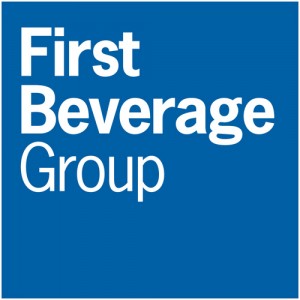
From a central juicing facility in South San Francisco, Project Juice currently sends its juices out to about 40 locations, including its two storefronts (one is shared with a Berkeley coffee shop), a few retailers, and other businesses, as well as to a growing group of consumers via direct shipping.

The minority stake taken by First Beverage will allow the fledgling Project Juice, which deploys High Pressure Processing (HPP) for increased freshness and improved shelf life over heat pasteurization, to expand beyond its current storefront locations. Two more retail stores are currently planned, one in S.F. and another in nearby Palo Alto, and eventually its founders would like to have as many as five by the end of the year, according to Greg Malsin, who started the company with wife Rachel Malsin and partner Devon Briger.

“Having locations where consumers engage with the brand, it’s important,” First said. “It’s a different experience that you can have as part of your business.”
The development of a retail experience has become a standard for many pressed juice companies. Starbucks took its Evolution Fresh purchase and has begun to spin out a line of brick-and-mortar juice shops, while smaller artisanal “juiceries” are also growing as a presence in many cities. To that end, Project Juice itself does not count the aisles of Whole Foods or conventional grocery to be part of its strategy; rather, its Project Juice stores and affiliated locations are the point of contact with consumers, according to its founders.
“We think getting in front of the consumer directly is a huge part of the whole purchase process,” Greg Malsin said. “We value connecting with our customer – you can create a loyal customer base once they’re part of the process. And at the end of the day, it’s a premium product they’re buying.”
The juice storefront is growing as a category “as a little bit of a convergence of liquid and food,” and so it makes sense when consumers begin to look at the products as meals, First said.

Additionally, he added, “There’s certainly more opportunity for innovation in a flagship location, both in delivery to a customer and the discovery of new trends than trying to shove it into one of your slots in Whole Foods or Safeway.”
Beyond their own storefronts, others in the HPP class of products are reaching out beyond store shelves, developing traffic through direct-to-consumer plays (BluePrint Cleanse, most notably) or through alternative distribution methods like drop-offs at alternative retail locations such as fitness studios.
Project Juice employs those methods, but the storefronts also offer the opportunity for extending the overall “Project” brand platform, suggested Rachel Malsin.
At stores larger than tiny kiosks, she said, the company will be able to offer Project types like food, nutritional aids, or other product classes. They may even carry other brands, the founders added.
“We’re creating more of a broad health and wellness destination,” Rachel Malsin said. “The kiosks are places where people can go and grab a juice.”